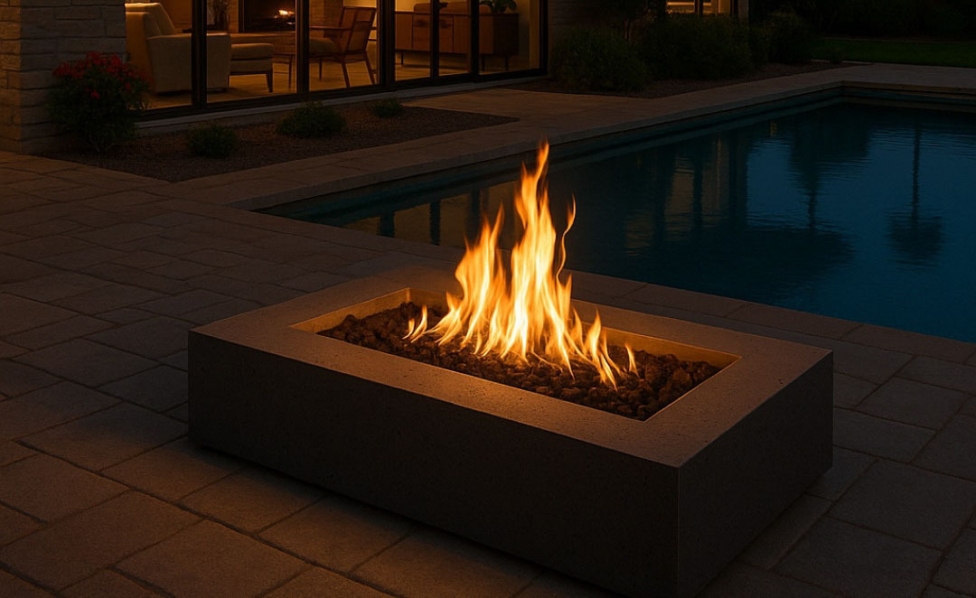
Fire Pit Safety Tips for a Better Backyard Experience
Bringing the fire to your backyard should feel easy, safe, and designed to last. A well-placed fire feature adds warmth, comfort, and connection to any outdoor space—but the right setup matters. Whether upgrading your patio with a premium gas burner or gathering around a wood-burning pit with friends, these fire pit safety tips will help you build a space that looks great and feels just right. From proper placement to smart shutoff habits, here's how to enjoy every fire without second-guessing a thing.
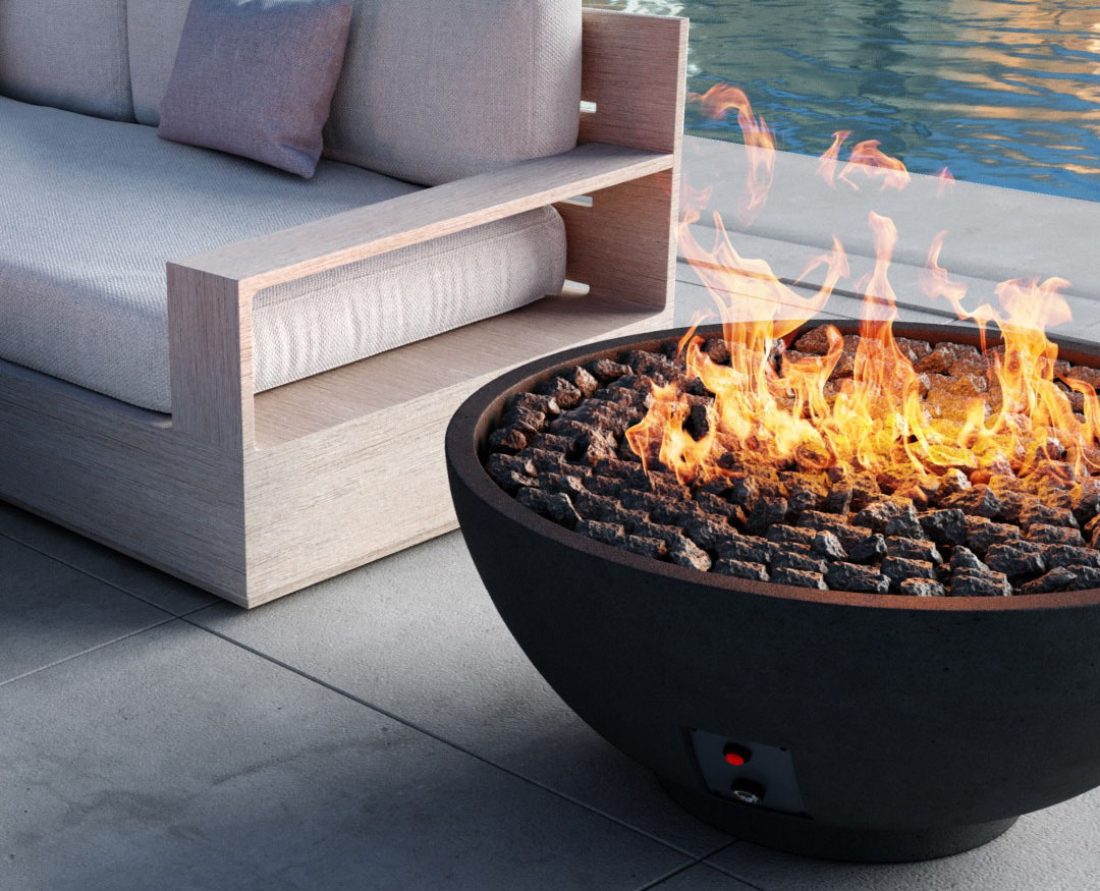
Start with the Right Setup: Know Your Fire Pit Type
Every safety plan starts with understanding what kind of fire feature you're working with.
Gas fire pits
- Controlled flame, adjustable output
- Ideal for covered patios and tight areas (with proper clearance)
- Requires connection to a fuel source and ventilation
Wood-burning fire pits
- Real flame and crackle, with more smoke
- Best for wide-open spaces
- Produces ash and sparks, requiring extra buffer zones
Firegear offers wood-burning features like the smoke-less LUME Surround. It delivers the charm of a wood fire without the smoke, within a fire-rated GFRC enclosure.

Know the Safe Distance: Clearance Isn’t Optional
Even a low flame can cause heat buildup when placed too close to walls, furniture, or overhead structures. Give your fire feature the breathing room it needs.
Key spacing guidelines:
- Horizontal clearance: Keep at least 5 to 10 feet from nearby structures
- Vertical clearance: Maintain a 7-foot minimum between flame and ceiling or patio cover
- Seating distance: Position chairs or benches 3 feet back from the outer edge of the unit
- Airflow consideration: In covered or semi-enclosed patios, allow for cross ventilation to prevent heat and fume buildup
Firegear designs many of its gas fire features with installation flexibility, but even the best burner needs proper space to operate safely.
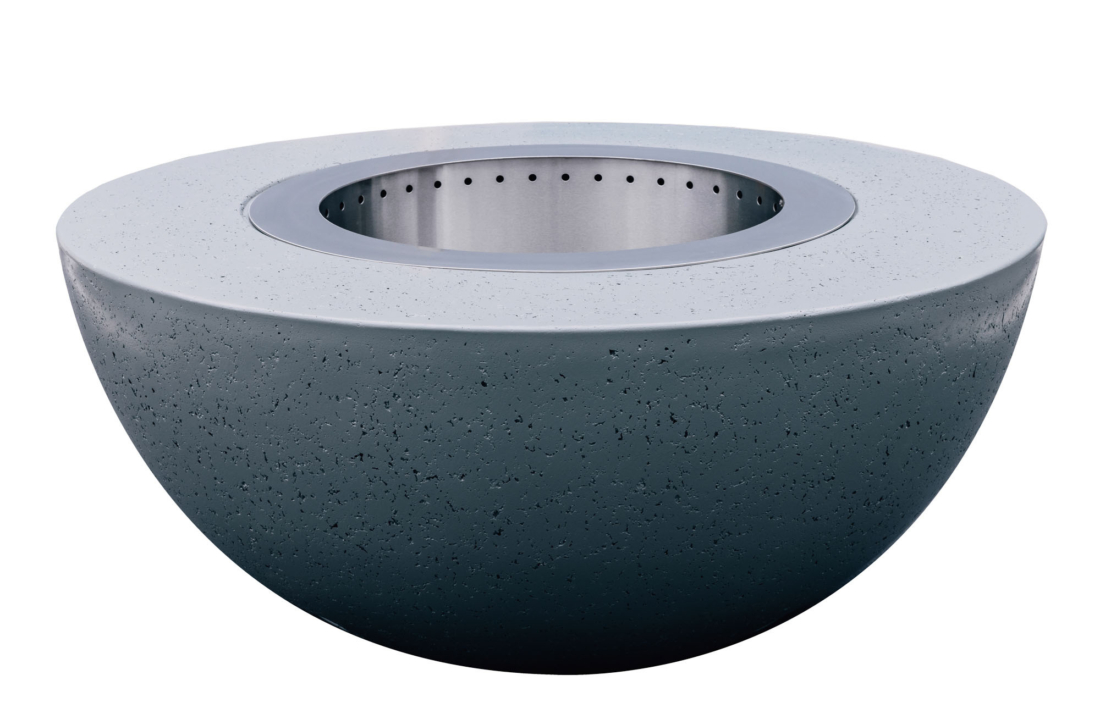
Yes, a Deck Can Work—If It’s the Right Product
Installing a fire pit on a deck raises valid concerns. With the right equipment, though, it's possible.
For gas fire pits:
- Use a non-combustible base, such as pavers or a heat-rated deck pad
- Firegear’s Sanctuary Series includes gas fire features housed in GFRC enclosures built for heat protection and surface safety
For wood-burning fire pits:
- Avoid direct contact with composite or wood decking unless the unit is enclosed
Before installing anything on a raised surface, check local fire codes and follow manufacturer guidelines.
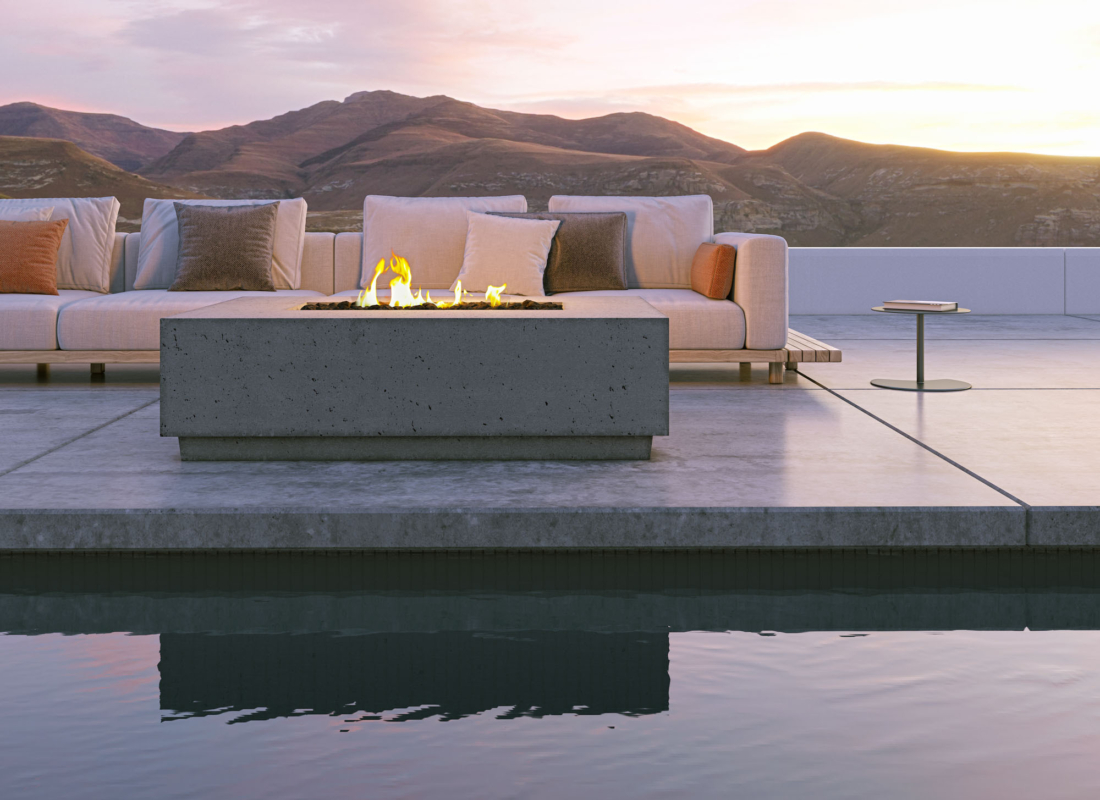
Watch for Common Hazards Before Lighting Up
Placing a fire pit too close to overhangs or flammable items isn’t the only risk. Here are a few red flags to avoid:
- Wicker or fabric furniture surrounding an open flame
- Fire pits placed on uneven, soft, or grassy areas
- Overhead lights or fans installed directly above the flame
- Loose debris, leaves, or trash nearby
- Plastic accessories or children’s toys within the heat zone
Correcting these issues is simple. A level base, clear buffer zones, and non-flammable surroundings make the space safer.
Smart Safety Gear You’ll Be Glad You Had
Too many homeowners light the fire before setting up safeguards. A few simple tools and accessories can protect your space without adding clutter.
Recommended nearby items:
- Fire extinguisher (ABC-rated)
- Long-handled tools
- Heat-resistant gloves
- Water or sand bucket
- First-aid kit
- Spark screen (for wood pits)
- Fire-rated surface pad
Firegear’s installation and owner manuals include setup suggestions based on product type. Always follow those first.
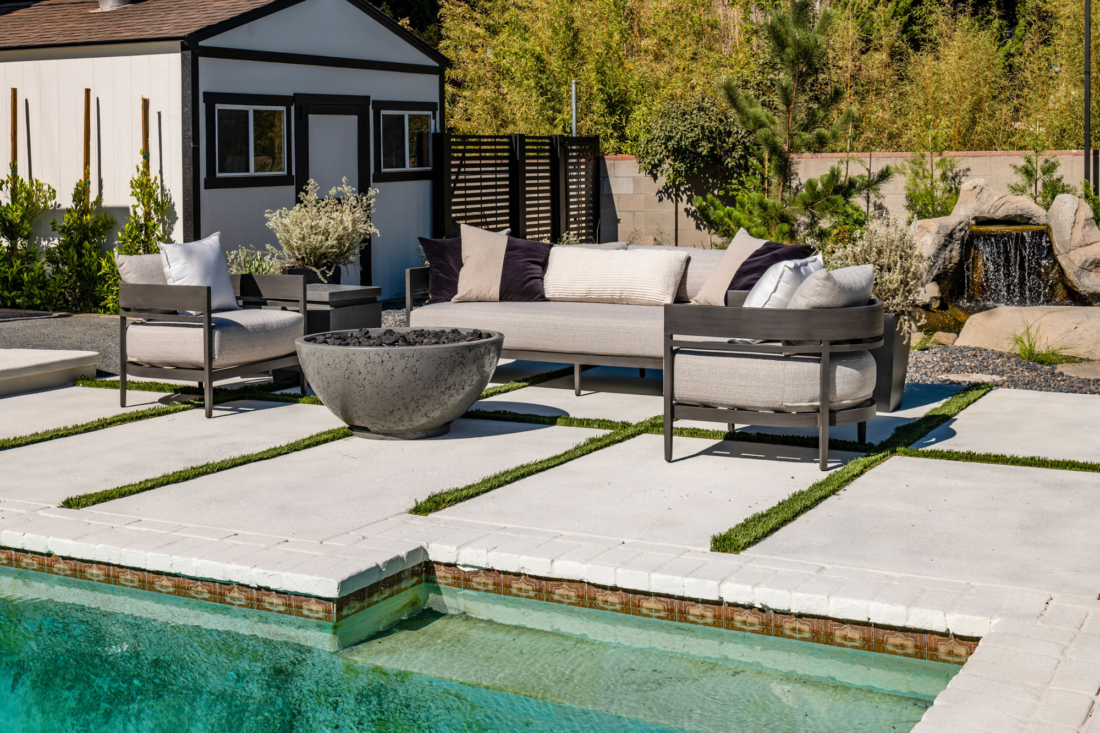
Shutdown Isn’t a Shortcut—It’s the Final Step
Letting a flame die down isn’t enough. A safe fire pit requires an intentional shutoff and cool-down.
Gas fire features:
- Turn off both the control valve and fuel supply
- Let burners cool completely before covering
- Check for obstructions or leftover media debris before the subsequent use
Wood-burning fire pits:
- Spread out hot coals
- Douse thoroughly with water or sand
- Once cooled, dispose of ashes in a metal container—never plastic or wood
Cover the fire feature only when everything has cooled completely. This prevents moisture buildup, debris clogging, and accidental relighting.
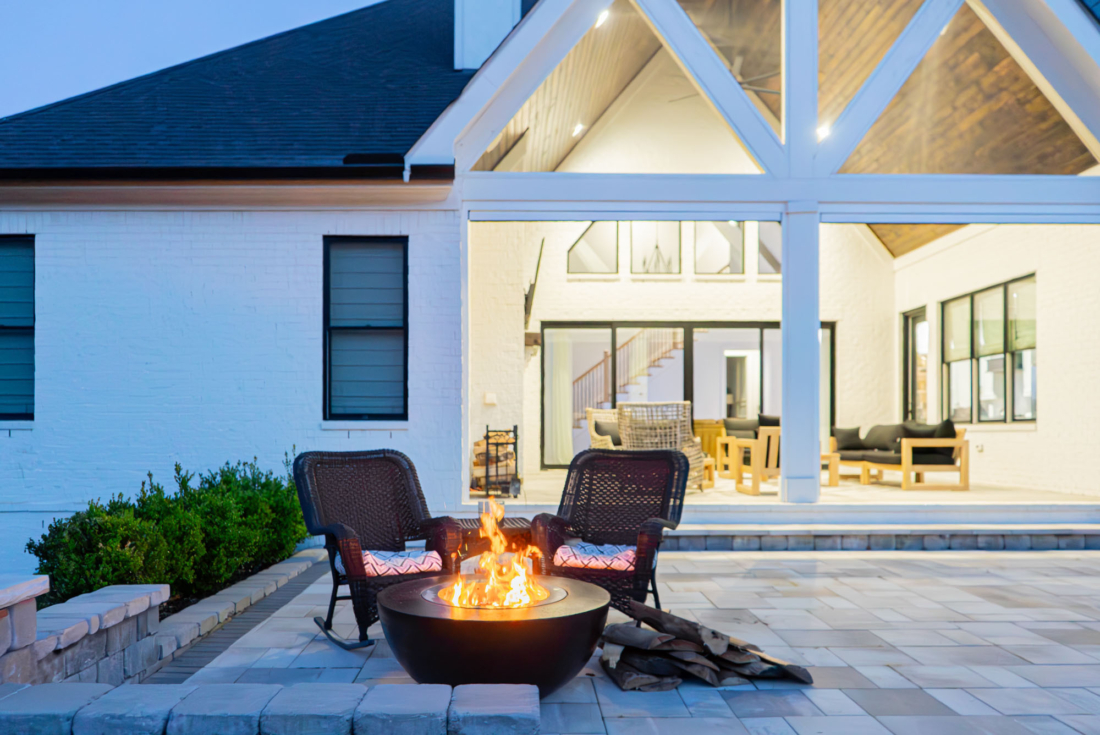
Codes and Rules Matter—Even in Your Own Backyard
Many homeowners assume that because a fire pit is "outside," they can place it anywhere. Most municipalities and HOAs disagree. Some codes prohibit open flame within a specific distance of a structure or limit when fires can be used.
Smart steps before setup:
- Check city or county fire codes on outdoor burners
- Contact your HOA for location or usage restrictions
- Review Firegear’s product installation manuals to ensure your layout complies
When in doubt, your local fire department or building inspector can confirm what’s allowed in your area.
Frequently Asked Fire Pit Safety Questions
Can I use a fire pit under a pergola?
Yes, if the fire feature is rated for covered use and you maintain proper vertical clearance (at least 7 feet) and ventilation.
Is it safe to use a fire pit during windy conditions?
Avoid using any open flame in high winds. Gusts can scatter embers and create uneven burn patterns, even in gas units.
Should I cover my fire pit when not in use?
Yes. Once completely cooled, use a weather-rated cover to keep out debris and moisture.
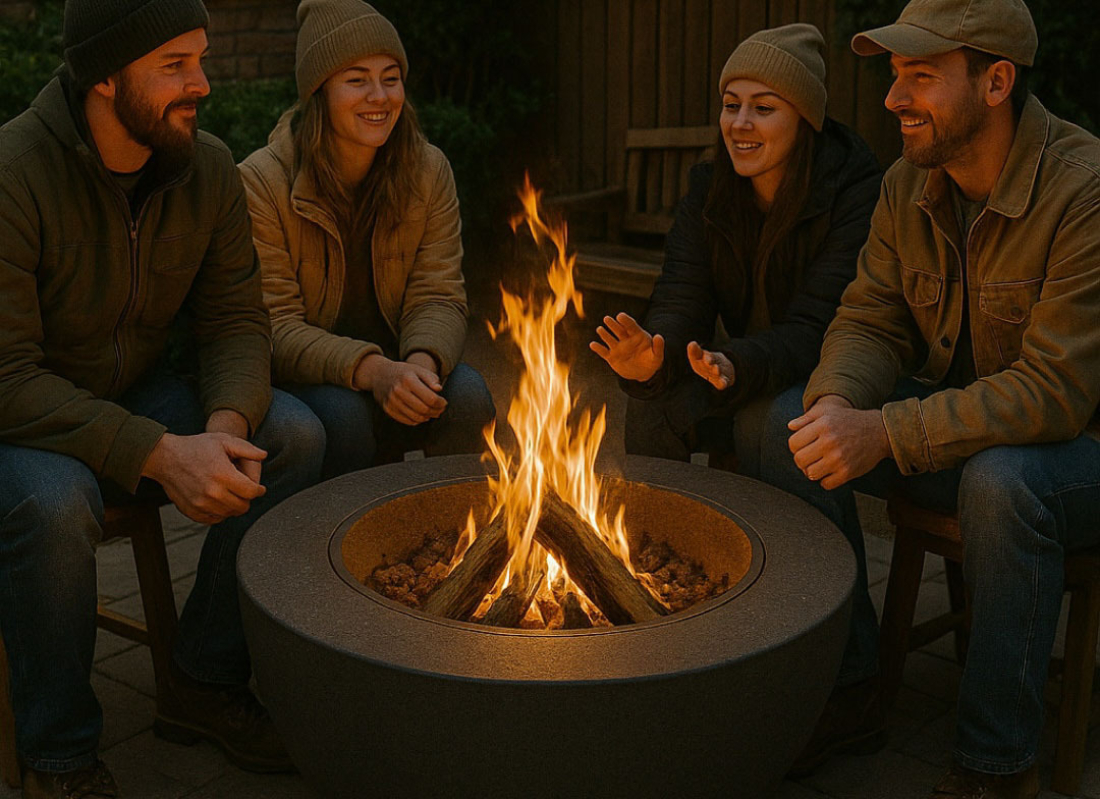
Your Next Step: Safe, Stylish Fire Features Built for Real Outdoor Living
A well-designed fire feature does more than keep you warm—it brings people together, extends your living space, and creates a lasting focal point in your backyard. When safety is built into the design, everything else falls into place.
At Firegear, we craft fire features that combine performance, quality materials, and intentional design. Whether you’re choosing a low-maintenance gas model from our Sanctuary Series or enjoying the natural flame of our smoke-less LUME Surround, every product is made to deliver comfort and peace of mind, season after season.
To plan your space with safety in mind, find a dealer or read our lifestyle blog for more fire pit safety tips and design advice.